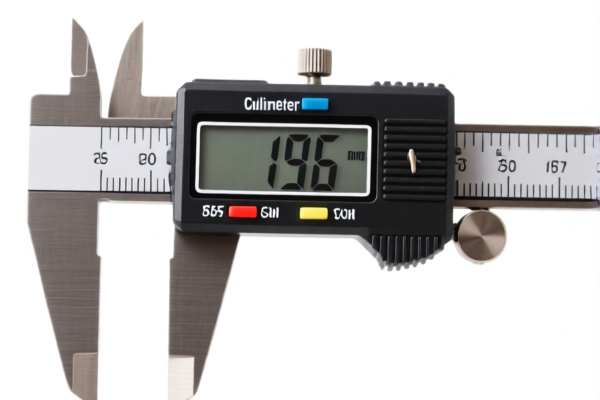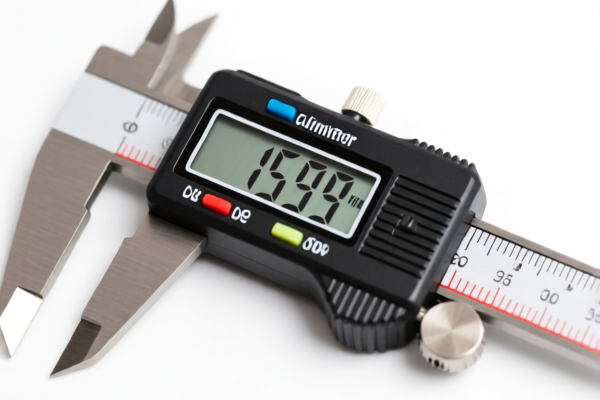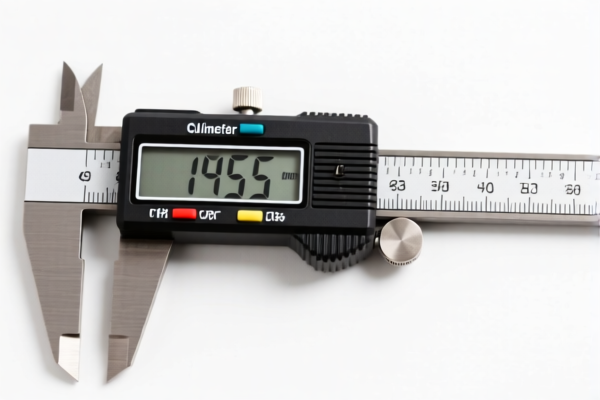| HS Code | Official Doc | Tariff Rate | Origin | Destination | Effective Date |
|---|---|---|---|---|---|
| 9031808085 | Doc | 30.0% | CN | US | 2025-05-12 |
| 9031909195 | Doc | 80.0% | CN | US | 2025-05-12 |
| 9017304000 | Doc | 60.8% | CN | US | 2025-05-12 |
| 8423901000 | Doc | 55.0% | CN | US | 2025-05-12 |
| 8423891000 | Doc | 55.0% | CN | US | 2025-05-12 |
| 8473309100 | Doc | 45.0% | CN | US | 2025-05-12 |
| 8473509000 | Doc | 55.0% | CN | US | 2025-05-12 |




Digital Caliper
A digital caliper is a precision measuring instrument used to accurately measure the internal and external dimensions of an object. It provides a digital readout of the measurement, eliminating the need for manual reading of a scale.
Material:
- Stainless Steel: The most common material due to its durability, resistance to corrosion, and accuracy.
- Carbon Fiber Composite: Lighter than stainless steel, often used in high-precision applications where minimizing weight is important.
- Plastic: Less expensive models may utilize plastic for certain components, but generally less accurate and durable.
Purpose:
Digital calipers are employed in a wide variety of fields requiring precise dimensional measurement. Common applications include:
- Engineering: Measuring components for manufacturing, quality control, and design verification.
- Machining: Accurate measurement of parts before, during, and after machining processes.
- Woodworking: Measuring lumber, joinery, and finished wood products.
- Jewelry Making: Precise measurement of gemstones, metal stock, and finished jewelry pieces.
- Automotive: Measuring engine components, brake rotors, and other parts.
- Medical: Measuring anatomical features or medical device components.
Function:
Digital calipers operate based on the principle of differential measurement. They typically include:
- Main Scale (Beams): The primary measuring surfaces.
- Depth Probe: Used to measure the depth of holes or recesses.
- Inside Jaws: Used to measure internal diameters.
- Outside Jaws: Used to measure external diameters.
- Depth Rod: Extends from the end of the caliper to measure depth.
- Digital Display: Shows the measurement in millimeters (mm) or inches (in).
- Zero Button: Sets the current position as the zero point.
- On/Off Button: Powers the instrument on or off.
- Units Button: Switches between measurement units (mm/in).
Usage Scenarios:
- Measuring the outer diameter of a shaft.
- Determining the inner diameter of a pipe.
- Measuring the depth of a hole.
- Checking the thickness of a plate.
- Measuring the width of a component.
- Taking repetitive measurements for quality control.
Common Types:
- Standard Digital Calipers: The most common type, suitable for general-purpose measurement. Accuracy typically ranges from ±0.01mm / ±0.0005in.
- Absolute Digital Calipers: Retain the last measurement even when the caliper is turned off. This eliminates the need to re-zero the instrument each time it is used.
- Wireless Digital Calipers: Transmit measurements to a computer or other device via Bluetooth or other wireless protocols.
- Dial Calipers: An older analog type, using a dial gauge to display measurements. While less precise than digital calipers, they do not require batteries.
- Vernier Calipers: A manual analog type that requires the user to interpret a scale. Less precise than digital or dial calipers.
- Long-Jaw Calipers: Designed for measuring larger objects.
- Miniature Calipers: Used for measuring small parts.
Digital calipers are measuring instruments used for precise length measurements. They are handheld devices commonly used in engineering, manufacturing, and quality control to determine the distance between two opposing sides of an object.
The following HS codes are relevant to digital calipers, based on the provided information:
-
9017.30.40.00: This HS code falls under Chapter 90, which covers “Measuring or checking instruments, appliances and machines, not specified or included elsewhere in this chapter; profile projectors; parts and accessories thereof.” Specifically, it covers “Drawing, marking-out or mathematical calculating instruments (for example, drafting machines, pantographs, protractors, drawing sets, slide rules, disc calculators); instruments for measuring length, for use in the hand (for example, measuring rods and tapes, micrometers, calipers), not specified or included elsewhere in this chapter; parts and accessories thereof: Micrometers, calipers and gauges: Micrometers and calipers”. This code is applicable to handheld length measuring instruments like calipers. The basic tariff is 5.8%, with an additional tariff of 25.0%, and a further tariff of 30.0% after April 2, 2025, resulting in a total tariff of 60.8%.
-
9031.80.80.85: This HS code also falls under Chapter 90, covering “Measuring or checking instruments, appliances and machines, not specified or included elsewhere in this chapter; profile projectors; parts and accessories thereof: Other instruments, appliances and machines: Other”. This code is for measuring instruments not specifically categorized elsewhere. The basic tariff is 0.0%, with an additional tariff of 0.0%, and a further tariff of 30.0% after April 2, 2025, resulting in a total tariff of 30.0%.
-
9031.90.91.95: This HS code falls under Chapter 90, covering “Measuring or checking instruments, appliances and machines, not specified or included elsewhere in this chapter; profile projectors; parts and accessories thereof: Parts and accessories: Other: Other”. This code is for parts and accessories of measuring instruments. The basic tariff is 0.0%, with an additional tariff of 25.0%, and a further tariff of 30.0% after April 2, 2025, with an additional 25% tariff for steel and aluminum products, resulting in a total tariff of 80.0%.
Regarding HS code 9031.90.91.95, please note that if the digital caliper contains steel or aluminum components, a 25% additional tariff applies.
Customer Reviews
No reviews yet.